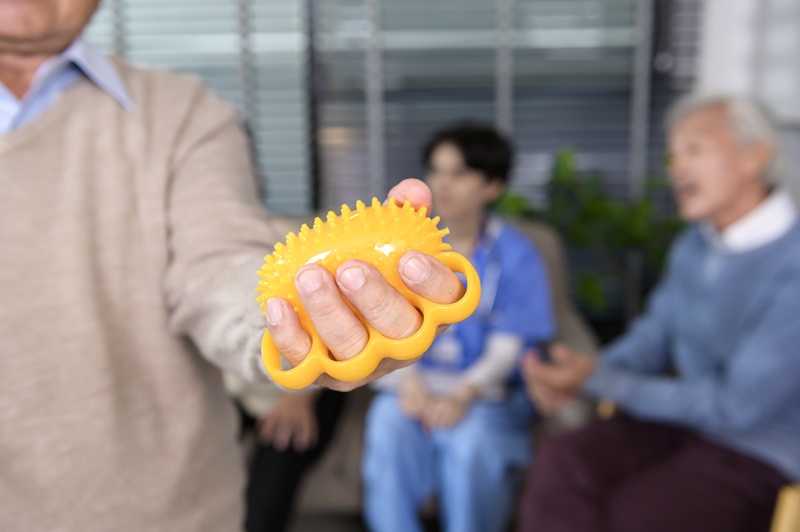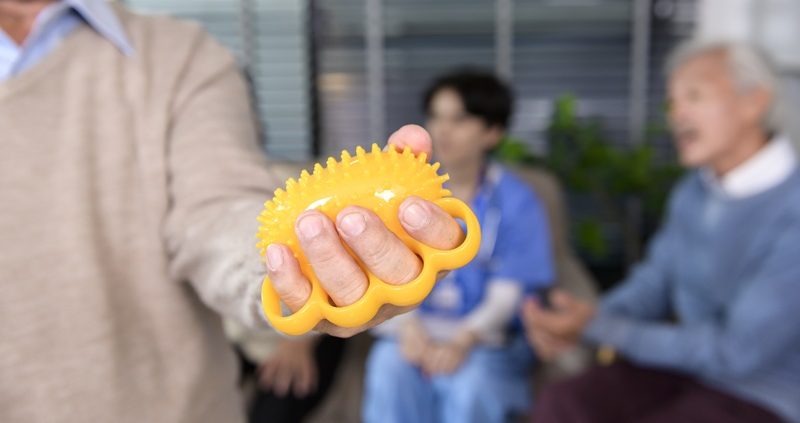8 Ingenious Ways Therapists Use Grip Tools in Patient Rehab

A few years ago, I met a friend who had broken his wrist in a biking accident.
The surgery went well, but what surprised him the most was how weak his hand felt afterward. He couldn’t open jars, hold his coffee cup without pain, or even type for long.
What made the biggest difference in his recovery wasn’t some fancy machine, it was a set of simple grip tools his therapist gave him. Week by week, those little squeezes helped him regain strength, independence, and confidence.
That story is more common than you might think.
Therapists know that grip strength rehab is one of the most powerful ways to bring patients back to normal life. Grip tools may look small, but they have a big role in patient recovery.
Here are seven of the best ways therapists use them.
How Therapists Use Grip Tools in Rehab
Listed below are the best ways therapist can use grip tools during patient rehabilitation:
1. Rebuilding Hand and Forearm Strength
Grip tools are like hidden heroes in rehab. They target the small muscles in your hands and forearms that larger exercises often miss.
Therapists start patients with gentle resistance to wake up those weakened muscles, then slowly increase the challenge using rehabilitation hand strengtheners.
This adds to the foundation needed for bigger movements, whether that’s carrying bags, cooking dinner, or just holding a phone without strain.
2. Restoring Everyday Independence
It’s easy to take everyday tasks for granted until you can’t do them anymore. Patients often feel frustrated when simple things like opening a water bottle or buttoning a shirt become impossible.
Therapists use hand therapy equipment to rebuild not just muscle, but independence. When a patient finally manages to twist open a jar or pick up a heavy cup, it’s more than just progress, it’s freedom.
3. Customizing Recovery for Each Patient
No two patients heal the same way, which is why therapists love grip tools. They’re incredibly versatile.
For someone with arthritis, a soft foam ball may be the perfect starting point. An athlete with a wrist injury might need firmer resistance or timed holds.
By adjusting the type and resistance of grip strength tools, therapists can make recovery feel personal and achievable, rather than intimidating.
4. Tracking Progress That Patients Can See
One of the hardest parts of rehab is wondering if you’re actually improving. Grip tools solve that problem by making progress measurable.
Therapists can track how many squeezes a patient completes, how long they can hold a grip, or how much resistance they can handle.
5. Encouraging At-Home Recovery
Recovery doesn’t stop when therapy sessions end. Therapists encourage patients to keep working at home with easy-to-use tools. Something as simple as rubber grip training rings can fit into anyone’s day.
Patients can squeeze them while reading, watching TV, or sitting at their desk. The more consistent the practice, the faster strength and confidence return.
6. Improving Coordination and Dexterity
After injuries, patients often struggle with fine motor skills. Typing, writing, or fastening buttons can suddenly feel like major challenges. Grip tools help retrain coordination by engaging smaller muscle groups with steady, repetitive movements.
With time, these exercises bring back the precision that makes everyday life smoother and less frustrating.
7. Building Confidence Through Small Wins
Recovery can feel overwhelming, and that’s where grip tools truly shine. Every extra squeeze, every longer hold, every increase in resistance feels like a small victory.
Therapists know these little milestones matter as much as the physical healing. They remind patients that progress is real and within reach, which builds the confidence to keep going even when recovery feels slow.
8. Reducing Stress While Promoting Healing
Therapists also use grip tools as a way to help patients manage stress during recovery. Squeezing and releasing a grip ring or therapy ball creates a calming rhythm that not only builds hand strength but also eases tension.
For patients who feel anxious about their progress, this simple motion can double as a stress reliever. The mind and body are closely connected in recovery, and when patients feel more relaxed, their therapy sessions often become more productive.
Grip tools support both physical healing and emotional balance, making them a small but powerful part of the rehab.
Over To You
When you’re going through rehab, it’s easy to feel like progress is slow and the road is long. That’s why therapists lean on tools that make a real difference.
Grip strengtheners may look small, but they can be life-changing. They’re not just about building muscle, they’re about giving you back the confidence to hold a cup, button your shirt, or carry your groceries without a second thought.
If you’re in recovery, remember that every squeeze counts. Each small effort is a step toward independence, and those steps add up.
Healing doesn’t always happen in big leaps, it often starts with something simple you can hold in your hand.





Leave a Reply
Want to join the discussion?Feel free to contribute!